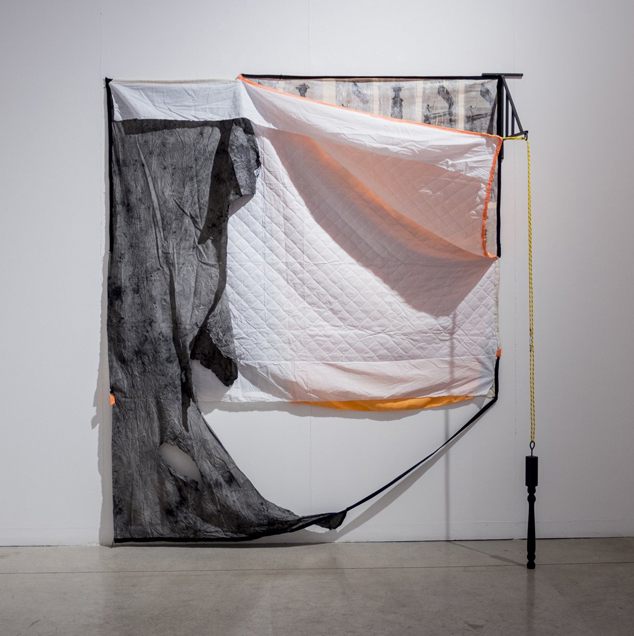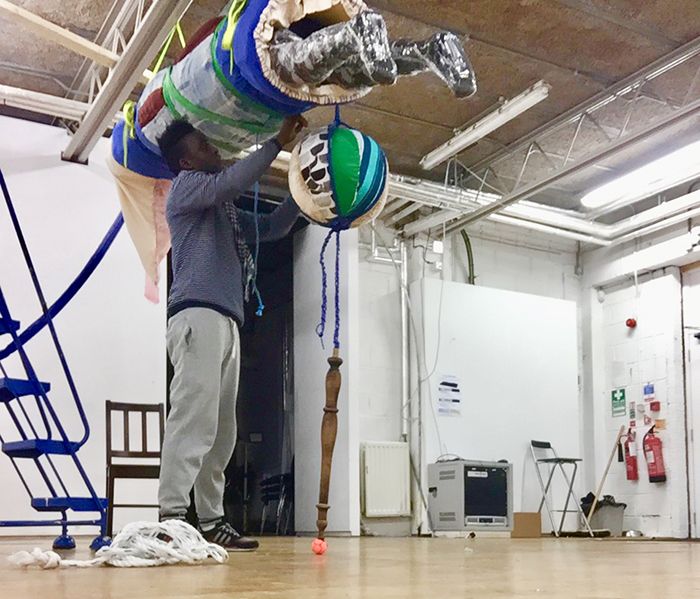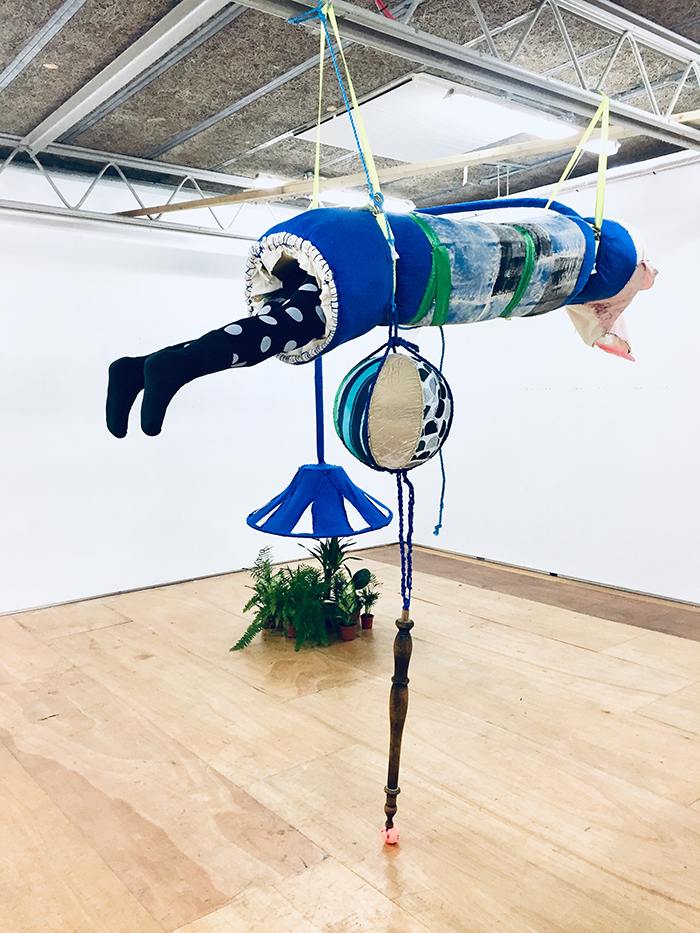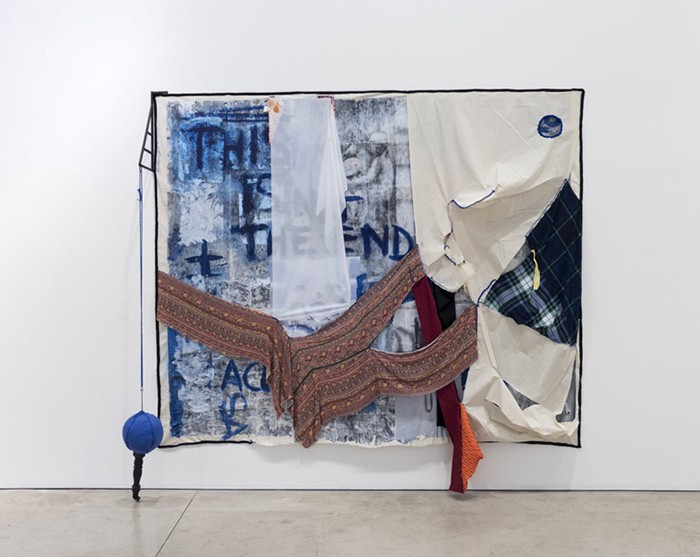Contemporary artist Januario Jano balances a fine line between analogue and digital with his work. The multidisciplinary artist discusses his practice in an interview with Anjali Singh for the Asian Curator.

Artist interview
We are tactile and sensual creatures. Adrenaline is released on interaction with others as well as informing our understanding.
Contemporary artist Januario Jano
How to become an artist.
Please tell us a little about yourself. How do you describe yourself in the context of challenging people’s perspectives via your work?
As a child, I was always conflicted with the idea of belonging to a specific place. I used to dream of navigating from place to place, these dreams are now real. I have a very nomadic life. Within my practice, research is the substantive feature. Reflecting on the ideas of home and self, I constantly challenge my approach through history exploration and contemporary narrative catechism within the context of the growing interdependence of the world’s economies, cultures, and populations. I am enthralled with the hypothesis of a delicate balance between fiction and reality, alarmed by the increasing concern over human and non-human coexistence, galvanised by the urge to create time and space feasible correlation. In this context the role of the body is pivotal, and its multidimensional representation occurs within the framework of proverbial globalisation and cross-cultural interaction.
To put things less entangled, I fit well in the kind of labels that people often described as a multidisciplinary artist happen to work with different mediums and formats, which employ sculpture, video, photography, textile and sound installations, performance and sometimes cooking.
What brought you to the world of contemporary digital/visual art and how did you start?
First it I can described, its was a sort of scape, as the only child from a failed relationship I found myself divided between two different parental structures, I did not fit in well to both of it, my scape was to dive in to an imaginary universe where I would find my voice and things that could speak to me and understand what I was trying to say. In my young life, creating something was rewarding, so I started making all sorts of things without knowing the definition of it, accidentally or intuitively as I was doing design, arts and cooking and many other things which now I know the labels associated with it.
To answer that more specifically, what brought me to contemporary visual art was the consequence of many things I did early in life which has been the driven force of my artistic (or creative) life. I started as this kid making things, fast-forward to holding a degree in design, which I tried for more than 10 years in parallel with art projects, after these years I found myself conflicted with the pervercificity of the commercial design world, I decided to change it all by take on a Master degree in Fine Arts, added to my artistic vocabulary the critical element that I felt was missing to my practice.

Let’s talk about your frameworks, references and creative process.
I have been reflecting on issues of displacement, the body, materiality, historical memory, and environmental concerns, but discovering alternative approaches to the traditional views and concepts are all feeds to the initial stage of my creative process. Research has been a core element of the practice and that result on the physical outcomes, and exploring the potentials of the hybrid spaces allow me to employ techniques and methods fundamentally for the outcome of the project.
The cultural influence tends to have a huge influence on my artistic practice, especially from my cultural background. Therefore, the current time has been a sort of catalytic agent of the non-physical material use. I also collect a great amount of textile, and other materials that I use to make work. Photography is very present to all the process, it’s important to keep all these material and other sources of my interese close, as I sometimes rely on them for directions.
Now, let’s work through a process to make one of the recent nondisclosure pieces I am working on now. They are mainly textile based (calico and canvas would be the main, because of its historical embeddings), mixed of used and new fabric are normally stitched together to create one object, then I would add, wood, wire, ropes, LCD monitors, projectors, lights, beads, wool, felt, aluminium, powder-coated steel and wheels. Then, I have to assemble them together to form a vehicle-like space. I have to manipulate some of these materials to create form and shapes accordingly, the fabric will serve to construct wearable pieces. The steel would be used to create a base structure alongside with the wooden pieces. Done.
What would you call your style?
It’s difficult to describe a particular style. Early in my career I tried to develop a style, I created a signature character called “Kwick Pops”, it was sort of distorted cartoons blended with classical african hieroglyphics. But I have to give it a rest as my practice grows and the direction shifts to a research centred approach. Nowadays I can ensure that I have not a specific style, therefore, methods to tackle most of the challenges I personally put up.
Choice of medium in art: Digital
Let’s talk about the evolution of your practice and medium of art over the years.
First and foremost, I am sort of in between digital and analogue, I don’t like to be too much of a medium. We have been pushing back to a position where we doubtfully have to question our relationship with physical matter, therefore, could we rely solely on the memories of materials and accept the virtual condition of it? This would be a catastrophic condition for the material importance, that I need it in order for my practice to survive, in addition to that, maintain a healthy mind, sensual, intimacy, we need touch, and feel it close to our skin.
We are tactile and sensual creatures. Adrenaline is released on interaction with others as well as informing our understanding.

Tell us about your commitment to your current medium in art.
In this resource-driven society dominated by the electrified visual content-based, instant, digital language, now-now demand of social media aesthetic, the sublime, the screen-based electronic devices are becoming an extension of us, allowing us to project to the digital realm in multiple dimensions seeking for salvation and the need to create a new social structure that feeds on the idea of nature “coalition” in relation to the destructive anthropocentric current state, while not giving in to doomsday scenarios but of survival for humans and non-humans.
This idea of supreme power lay on humans has been challenged and explored throughout the centuries, exposing our fragilities, and a profound misunderstanding of the universe’s complexity. The environmental disaster that is unfolding before us is the result of human actions, that put in check my relation with the current medium in art. Thus, exploring human actions in relation to space and time, would give me a better understanding in how to define my commitment with current material.
The creative process: creative blocks
What does the creative process mean to you?
In order to have the ability to process and come up with relevant outputs, it’s important to keep the mindbuzz active, to be able to continue challenging ideas in a progressive, resulting in an array of new forms of engagement. Thus, it is key and means that I have a fully functioning mind.
How do you deal with the conceptual difficulty and uncertainty of creating new work?
Normally, I don’t have this kind of downfall, but there are a great amount of things I do that feed to my art practice. For instance, cooking is another form of motivational and inspirational way I found very useful, other such as; walking, traveling, dance and drawing (doodling) the thoughts, are ways to escape the conceptual difficulties. Add to that, I find a way to create work everyday even if some of these works don’t transition to a physical matter, it’s still rewarding just to experience the imagination.

The creative process: creative inspiration
What is your source of creative inspiration?
I have many sources of inspiration, my main ones are humans and nature.
What are you looking for in other visual artists’ work?
How the conceptual ideas was translated to a visual one and the aesthetic approach in constructing a visual vocabulary. Also any historical references that settle well with the contemporary language. the craftsmanship.
Which shows, performances and experiences have shaped your own creative process? Who are your favourite contemporary artist maestros?
I have many encounters, but the most important one would be my first performance at Cape Town Art Fair, being on the master program at Goldsmiths and meeting Anastasiia Laukhina, a brilliant person with an amazing brain.
I have a soft spot for David Hommond, photographer Jean Depera, Malik Sidebe, Seido Keita, Ernesto Neto, Aboudolay Konote, Stan Douglas, Kerry J Marshall, Kara Walker, Faith Ringgold and Sonia Boyce .

Mention any art books, writers or blogs of note
Art books: Materiality, “Documents of Contemporary Art” Edited by Petra Lange-Berndt, The Object, “Documents of Contemporary Art” Edited by Antony Hudek, and some important non-art books:
A Short History of Modern Angola by David Birmingham, Critique of Black Reason by Achille Mbembe, Black Anthropocene, A Billion Black Anthropocenes Or None by Kathryn Yusoff, Mestre Tamoda by Uanhenga Xitu, Utopia, not Futurism: Why Doing The Impossible Is The Most Racional We Can Do by Murray Bookchin, Things Fall Apart by Chinua Achebe.
On contemporary digital/visual art.
What does contemporary digital/visual art mean to you? What role do contemporary artists play in shaping culture and society?
Its means, a necessary vehicle that is pushing positively the growth of humans.
Artists play a very vital role in shaping our society and culture since the very beginning of our existence. As times goes, the artists have been more engaged in redefining our perception of the world, by contributing to the continuing evolution of the human kind, bridging the complex understanding and our relationship with the planet and other living organisms, by presenting various forms and perspectives to enriching our own existential vocabulary.
Artist lifestyle: Art studio
Tell us about your art studio, what kind of place is it?
Defining an art studio for me is quite perverse for me. I am constantly moving around places, and it is difficult to make it as an art studio, but I have places where I tend to spend time working, looking after
my plants and going through my collection of material and other things that I find interesting. I have a place in Angola, where I kept large experimental projects, in London I have a small space and in Portugal a mobile non-permanent space. Mainly an art studio for me is whatever I would be working.

Day in the life of a visual artist: Could you describe your usual work-day?
My day is not linear, but I wake up later and I have a slow, large breakfast, followed by catching up on emails and messages on social media platforms, depending on the period of the year and what projects I am working on. Thus, I like to browse magazines, go to fabric stores, the fleet market is also heaven, write and draw as a meditational ritual. I am more productive in the evening, during the day I do more admin work and organize things (mornings are a very destructive period).
Pick one: Artist apartment v/s artist studio rental. Which one applies to you and why?
Artist studio. It’s my kind of place. I tend to transform spaces to accommodate my needs, apartments don’t say much to me.
Career as an artist
Let’s talk about your career as an artist, or if you prefer artistic journeys. What were your biggest learning and hiccups along the way?
The biggest learning is life itself. Most of the things I know were landed to me by existing and belonging to this large community driven by humans and other invisible forces. My upbringing still resonates well with me at present days, I tend to go back to places where I was in my childhood life, to relive those moments now with different perspectives. Although, I grew up and things do not seem to make much sense, but nostalgically it makes me feel good. But surely one thing I don’t regret letting go, was my street art at times, it’s cold out there.
Describe a professional risk that you took. What helped you take it?
I invested a great amount of time and resources on a project that did not go according to my plans. As I came to realization, I ended up short in resources and with a great amount of objects that I have not idea out to store them, that was profissional risk. I am sure I learn so much from it.
Any mentor, curator or gallerist who deserves a special mention for furthering your career as an artist?
I have many people that play a big role in my life, consequently it impacts my artistic career, one of these people is my grandma Marica, she’s 103 and still vivid as a middle aged lady, she is also part of my inspiration and motivation. Professionally, I have met many people during my beginnings but not necessary art related. There is one person who has been very active in my artistic development, Anastasiia Laukhina, an independent researcher, curator and teacher.
Best piece of art advice, and who was it from?
Don’t follow trends and the market. I have learnt that early in my artistic career. Most of the things I know I learn through trying out and error.
Let’s talk about the importance of a peer artist network & art advice.
It’s necessary to have a good roster of friends and network, they play a very crucial role in your career development. I have a very small circuit of peers, which gives me the ability to get the most of them without being taken so much away from me. Time is gold, and I really value it, I tend not to get oversocialized.
Is it imperative to have a visual art degree become a visual artist?
Having an art degree is necessary and rewarding, its personal choice to take on this path. Personally it was the best career decision I have made. Doing a master degree, was sort of looking for a missing piece on my artistic life. Therefore, it’s not the only path to become an artist.
Art relationships and the creative brief
How does your relationship with a curator or gallerist evolve, from the initial interface and creative brief to the working-relationship?
As a general rule, I keep a very wealth relationship with people, whether is curators, artists, collectors, gallerist or admires (you get quite a lot of these unsolicited messages through social media from people you have not idea who are they, but it feels kind of very close to you, weird!). Whatever, it’s important to play along politely.
Working with the curators or gallerists, requires a certain level of intimacy, it’s important to set the tone early, this way, a clear understanding and methods of work is bridged nicely.
On artist commissions
Are you more of a studio artist or naturally collaborative by nature?
Kind of both, it’s well balanced.
How do you feel about artist commissions?
Missions are personal, for me it should be accomplished in order to move to the next one. But this doesn’t mean it’s always a success, the failures are also important.
was the best career decision I have made. Doing a master degree, was sort of looking for a missing piece on my artistic life. Therefore, it’s not the only path to become an artist.
Art marketing & building an audience
Tell us about your first sale.
I don’t remember, it must be lost on the amount of other sales, that I could not keep a record of it. I am sure it wasn’t that memorable.
Does art marketing come naturally to you?
Yes, it does. I have a background in the creative industry, I have learned a great deal of creative and strategic marketing language and methods.
Do you handle art valuation and sales yourself?
Rarely. The galleries normally are the one who are in charge of sales and art valuation.
How does your audience interact and react to the work you put out into the world?
It’s ambivalente! I tend to escape that kind of interaction. Thus, the reactions and feedback I received, it signals to continuing to do what I am doing.
On upcoming work
Any upcoming show or events we can look forward to
I am articipate and curating a group exhibition in Lisbon (Portugal) open in November, 2020 in collaboration with Jean Claude Maier gallery : http://jeanclaudemaier.com/exhibitions/#top
Also I will be speaking at this year’s Loeries Creative Week, on November the 17th. https://www.loeries.com/loeries2020.aspx?link=festival_programme_2020 , South Africa
Add to that, I have been invited to speak at the Gnration https://www.gnration.pt/ , following by a
Masterclass at https://www.bragamediaarts.com/en/ – Braga, Portugal.
Participating in a group exhibition Theorema 2 by the Imago Mundi Art (Benetton Collection) https://my.matterport.com/show/?m=siKaJ99qL8E – Italy.
Finally, curating and participate on a online group exhibition at https://www.kovet.art/
Artist Contact information
For enquiries contact gallery: www.primomarellagallery.com – info@primomarellagallery.com
https://tinawc.com/ – gallery@tinawc.com
Personal: studio@januariojano.com
Before you go – you might like to browse our Artist Interviews. Interviews of artists and outliers on how to be an artist. Contemporary artists on the source of their creative inspiration.












Add Comment